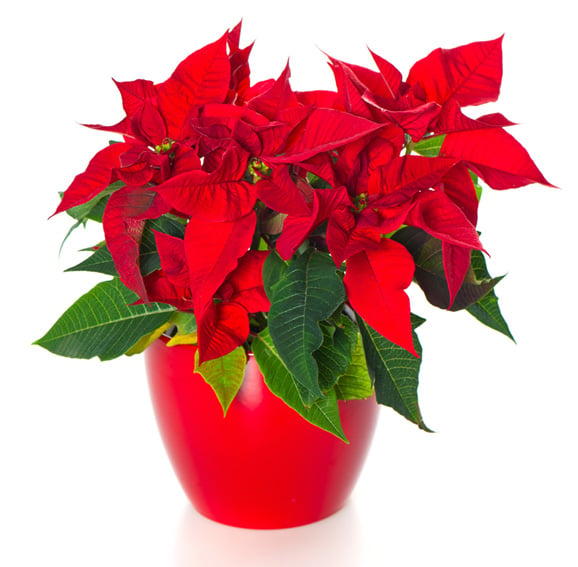
More than just a greenhouse specimen this is a seasonal decoration, the Poinsettia with its striking colour is a lovely plant. But one seldom seen other than during the run up to Christmas. Few house plants are easier to keep alive, yet few others are harder to get to perform as well again.
The Poinsettia, Euphorbia pulcherrima, a tender perennial shrub, was found in 1828 in Mexico by the American ambassador and so bears his name. Those bright red ‘flowers’ are actually bracts hiding the real flowers which are small and yellowish. The family has poisonous members and irritant sap so handle them carefully (however mainly because the Poinsettia is not very succulent accidents with it seldom occur).
Now assuming you’ve just bought yours then treat it like a baby, a winter chill on the journey home would be bad. A hot dry dark room will likely start some deterioration. Fortunately, regardless, most survive long enough to enhance Christmas. Use warm rain water to keep the compost constantly moist. As soon as convenient, move the plant to a bright place in a constant, sixty to seventy degrees Fahrenheit and from the New Year water less and less. The leaves will fall off, when half have fallen stop watering entirely, dry off in the pot and leave it alone until spring.
In mid-April trim the top back but never touch the roots, and pot up a size in rich free draining compost. (Use the trimmings as cuttings and take more once the plant is in growth.) Start watering carefully keeping the compost just moist until growth resumes with vigour, then feed and water generously. Syringe or mist and foliar feed as well. Even out of ‘flower’ Poinsettias are attractive and enhance the greenhouse bench with their healthy foliage.
Once the frosts are past you could move Poinsettias outside for the summer. You can even plant some out as garden specimens (they resent root damage and can’t be dug up and re-potted again so must be regarded as expendable). In late summer bring the pots under cover again, now the tricky bit begins.
The plants flower and colour up naturally but not as well and not when wanted unless you control their daylight hours. You need a proper horticultural light unit to both brighten and lengthen the dull days of autumn (these are expensive but one is also useful when sowing and growing under cover early in the year). You also need to keep out all stray light from street and security lights etcetera, say by placing the plants in a black plastic garbage bin, cupboard or similar at night. They need a bright day length of thirteen hours and complete dark for eleven hours a day till the first week of October then twelve / twelve for the next two months. Mind you, as they’re often cheaper than a bunch of flowers you may wonder why bother? Well, there’s nothing like trying something challenging, and succeeding.


